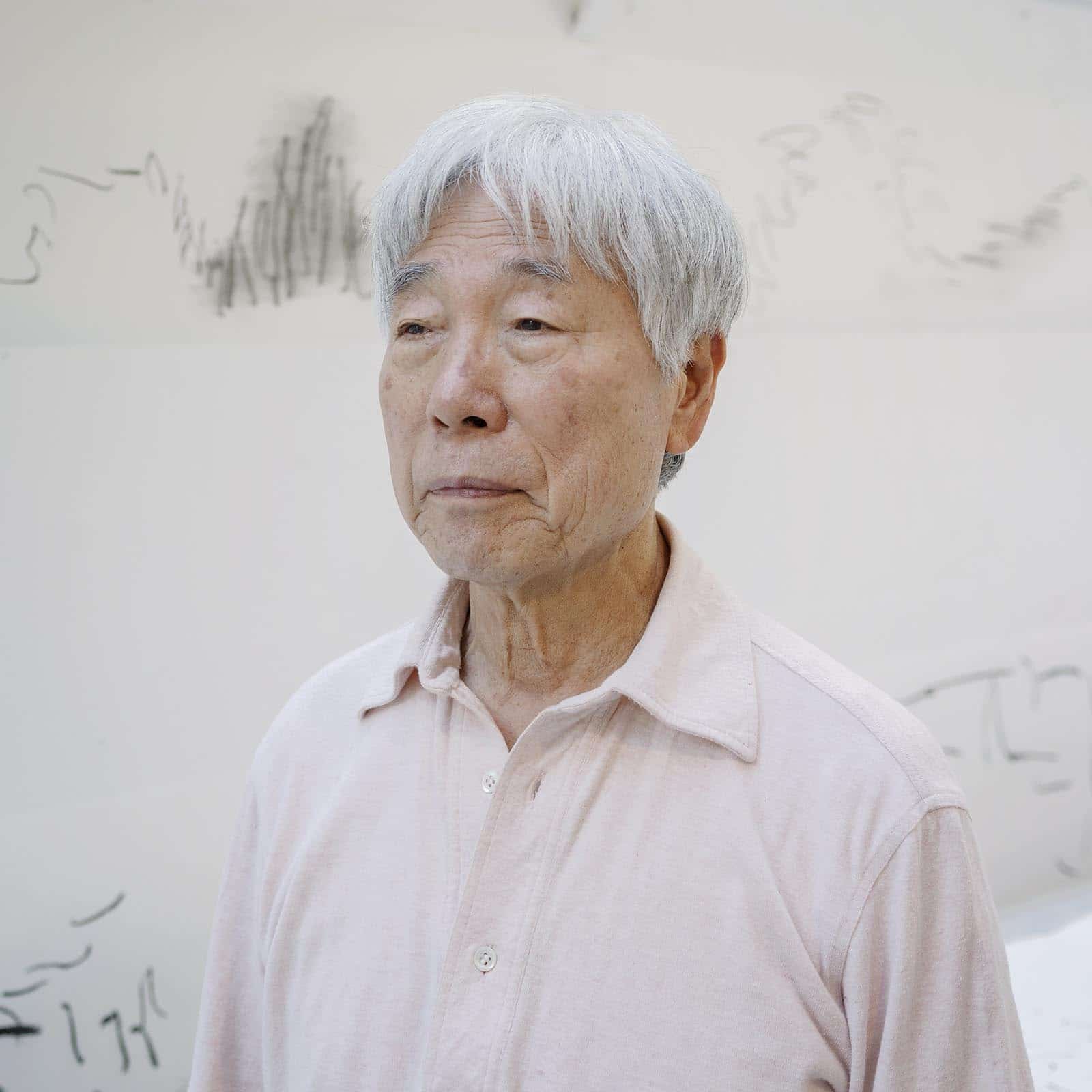Cahiers d’Art is proud to present two exhibitions of works on paper by Lee Ufan.
The complete series of Lee Ufan’s gouaches, “Acorns and Wildcat,” created in 1983 to illustrate the great Buddhist writer Kenji Miyazawa’s eponymous text, are on view at 14, rue du Dragon. These eleven gouaches, evolving from black to orange through blue and brown, are abstract calligraphies that not only develop the rich Buddhist consciousness of this famous tale, but communicate and portray its dreamlike and measureless scope.
Across the street, at 15, rue du Dragon, Lee Ufan’s six new drypoint etchings, created especially for Cahiers d’Art, are on display. Printed on Hahnemühle paper, the small ones are signed and numbered in an edition of 20.
The highlight of the exhibition are two 5-meter-long etchings on steel printed on Japan paper. A specially designed fabric box has been created to store the rolled print. Each print is signed and numbered in an edition of 10.
Passionate about prints, Lee Ufan had for many years wanted to test the limits of horizontality by creating an extremely long etching. Finally, at the studio of master printer Michael Woolworth, he realized this dream. By approaching the enormous proportions and hardness of the steel plates with all his physical strength, the artist created two different works as two ways to explore an infinite trajectory. Together an artistic, physical and technical feat, these impressive etchings are the result of an extraordinary cooperation between the artist and the entire workshop team.
A book in the form of a leporello accompanies the project. On its accordion folds, the second long etching is reproduced entirely. In a leaflet Lee Ufan describes his thoughts about etching: “When I am painting a canvas, I am in direct contact with it through the paintbrush. An etching is accomplished through the intervention of a number of factors beyond the artist himself, such as the plate, the proofer, the press, the paper and the ink, and so on. Thus, etching produces a piece that transcends me through the interaction of ideas and efforts coming from the outside environment. That is the appeal of etching. That is why each part of the process is invaluable and deserves to be highlighted. In my work, therefore, all of these elements do not take second place to the realization of my idea and they have their own purpose.”
Both vigorous and meditative, Lee Ufan’s etchings are an invitation to let our gaze drift over the lines and get lost in the voids. Fading in front of his own work, the artist thus traces for us a path to the invisible: “I hope that through this piece the audience does not simply sense a creation by Lee Ufan, but rather that they are exposed, through Lee Ufan as the intermediary, to the transcendence of a world far away.”
Untitled (I), 2019
Drypoint etching on Japan paper. Signed and numbered. Edition of 10 (+ 4 AP + 3 HC). 15 3/4 x 196 7/8 in (40 x 500 cm)

















